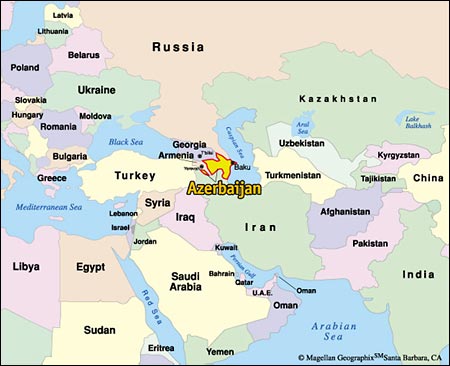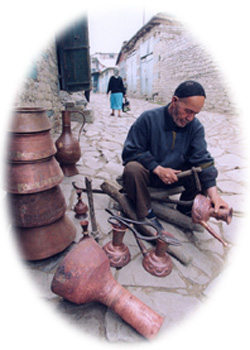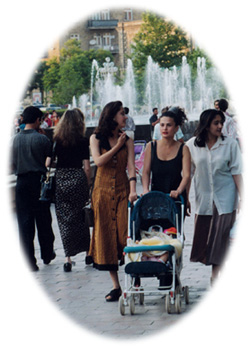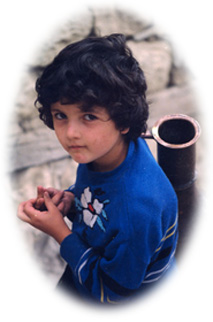flat72.jpg)

•
•
• Demographics
•
•
•
•
•
•
• Foreign Trade
• Privatization
•
•
•
•
•
•
• Caspian Basin Issues
•
•
• Oil & Gas Agreements
•
•

Demographics Population and Demographics, 2000 Gregory Twyman, Monmouth University Azerbaijan has a population of approximately 8,113,000
million (it is difficult to measure due to the massive influx of refugees,
displaced by the conflict in Karabakh and surrounding areas, estimated at over one million). Population
2000
Total population
8,113,000
Urban
51%
Source:
State Committee on Statistics
The Age Structure of Azerbaijan's Population is as Follows: Children and Youth up to 15 years old 32% The population's growth rate in the first 6 months of 2001 was 0.4%, or 32,000 people. By the year 2026 the country's population is projected to exceed 10 million. Life expectancy in Azerbaijan is 71.6, up slightly from the 1960 life expectancy of 70.9. Sources: State Committee on Statistics, CIA World Fact Book 2001. An old Azeri man Azerbaijan has 76 administrative divisions, 11 cities, including 8 with a population over 50,000 and two territories of special status: Nakhichevan and Karabakh. Slightly over half the population resides in urban areas. Population density was 93 people per sq. km in 2000. Azerbaijanis share cultural and historical links with Turkey and Iran, speak a Turkic language (Azerbaijani) and overwhelmingly worship Islam. There are 120,700 Christian Armenians living in Azerbaijan, including the population of the Karabakh region and surrounding areas.
Religions:
Muslim
93.4%
Ethnic Groups:
Azerbaijani
90%
2001 Estimate Sources: State Committee on Statistics, CIA World Fact Book Population
Projection (2000) by gender:
Gender
1985 1990 1995
2000 2005
Total M+F
6,669 7,218.5 7,726.2
8,081.0 8,425
Sources:
State Committee on Statistics, World Bank
Education
Level in %
1993
1998
Sources:
Siar International, CIA World Fact Book and State Committee on Statistics
Employment
Fountain Square
Several sources have indicated that Azerbaijan's agricultural sector continues to claim the largest number of employees with 30.8%. Azerbaijan's economy is still in transition from state control. Figures reflect that the government employs over 20% of the working population. These numbers will decrease in proportion to successful privatization of Azerbaijan's state-run enterprises.
Employment by Sectors:
%
Agriculture
30.8
Sources:
Sources: State Committee on Statistics, Bisnis Country Reports, CIA World Fact Book 2001
A refugee child
|





